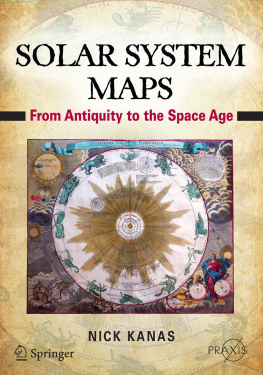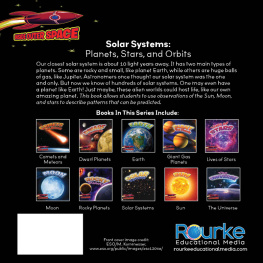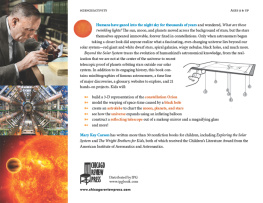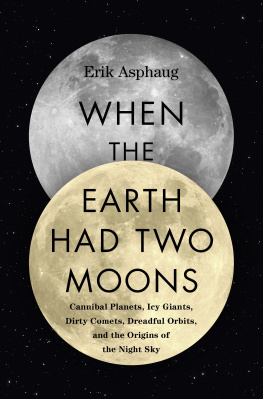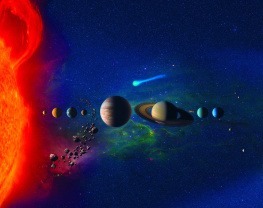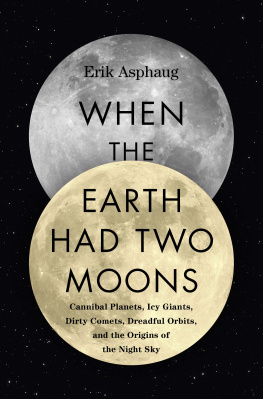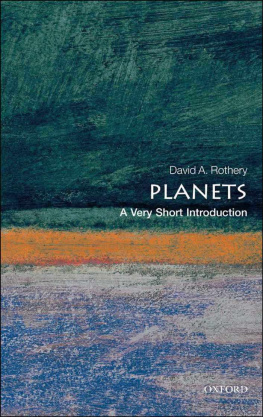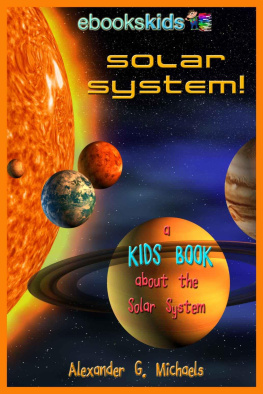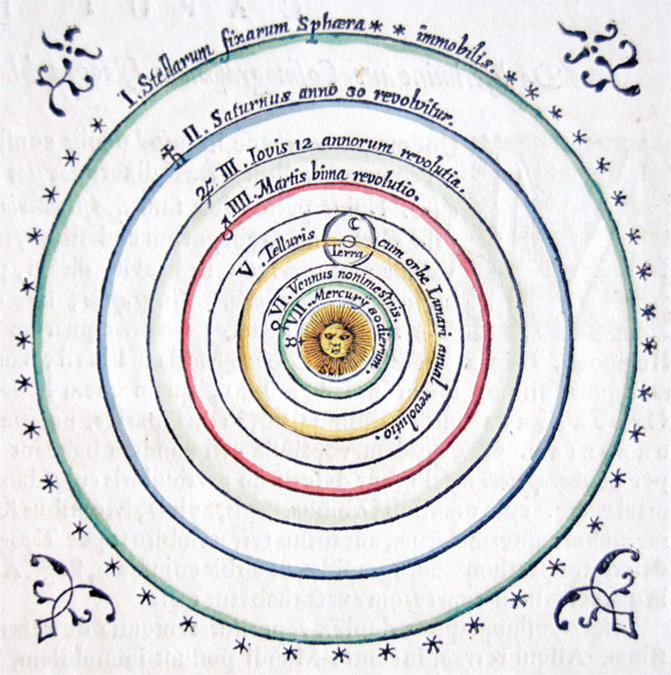Galileo Galilei rubbed his eyes. Peering through his spyglass was difficult work. The images were not crystal clear, and the night was cold. But he had seen wonders in Gods firmament over the past several evenings: the lunar surface had mountains and valleys, more like the Earth than Aristotles perfect featureless orb, and faint cloudy areas in the sky had resolved into a multitude of stars never before seen with the naked eye. And now, on January 11,1610, he would once again be checking on the star-like objects lined up to the east and west of Jupiter. When he first observed them four nights earlier, he thought them to be fixed stars, but on subsequent nights his sketchbook revealed that their numbers and pattern had been different in terms of how they presented themselves, first all to the west, then all to the east. How would they look tonight?
He strained to make out Jupiter through his eyepiece. Yes, the mysterious objects had moved again. Only two were visible, and their distances from the giant planet had shifted relative to the night before. The notions of Copernicus came to mind, who 70 years earlier had written that the so-called wandering stars like Jupiter were orbiting the Sun, not the Earth. Only the Moon went around the Earth. Could the strange objects in his telescope be miniature moons revolving around the mighty Jupiter? Astounded, he thought these observations would please his hoped-for patron, Grand Duke Cosmo II de Medici, who like Jupiter was a giant in his times.
In subsequent nights, Galileo would conclude that there were four such moons orbiting Jupiter, and he would name them the Medicean Stars in honor of the de Medicis. Galileo would publish his telescopic findings in March 1610, in a booklet entitled Sidereus Nuncius, or The Sidereal Messenger. This booklet became an instant success throughout Europe, not only for its findings, but also as an illustration of the power of the telescope to reveal heavenly sights never seen before. In fact, Galileo would be an advocate for this new instrument, which he had heard about just 10 months earlier. His subsequent improvements upon the original design allowed him to produce an instrument of sufficient quality and power to make his revolutionary observations.
1.1 PARADIGM SIDFTS AND WORLD VIEWS
The findings of Galileo called for a paradigm shift. A paradigm is a view or model of something that most people accept. Prior to Galileo, most people followed the Aristotelian view that our Moon was made up of a special heavenly substance called aether that was pure, everlasting, and smooth. Features that we see on the lunar surface were merely reflections of the impure and changing Earth. Furthermore, like the Moon and the Sun, the other wandering stars (the planets) were themselves made up of aether, and none had their own moons revolving around them. But with the publication of Sidereus Nuncius, this all changed. Now, the Moon was observed to have mountains and valleys like the impure Earth, and another planet, Jupiter, was shown to have its own retinue of moons going around it. The old ideas of what constituted a planet had to change to account for the new observations made by Galileo and his telescope.
But Galileos findings had even broader implications. They also seemed to shake the current view of the universe and supported the heliocentric ideas put forth by Copernicus, which had our Sun as the center of the cosmos surrounded by the orbiting spheres of the planets and the sphere of fixed stars. This world view is shown schematically in Figure and subsequent images used in this book, the title and year of the source will be given, which may or may not be the first edition. For the listed dimensions, the following principles are followed: 1) measurements are in centimeters; 2) for rectangular images, the distance between the innermost image border is given, first for the vertical then for the horizontal dimension; 3) for circular images, the least distorted vertical or horizontal diameter is given; and 4) the vertical by horizontal dimensions of the entire page are given in cases where the image dimension itself is ambiguous.)
Figure 1.1.
The Copernican heliocentric world view, from Blaeus Theatrum Orbis Terrarum, sive Atlas Novus, c.1645, section Introductio ad Cosmographiam, Eiusque Partes. 11.8 cm diameter (outermost solid circle).
Before Copernicus, most people advocated a geocentric view, where the Earth was in the center of the universe and all the other heavenly bodies revolved around it. But with Copernicus and Galileo, a new world view was called for. The term world view refers to the basic concept people have of their total existence: psychological, sociological, political, economic, scientific, religious, etc. It comes from the German term Weltanschauung, literally view or outlook of the world. Changes in world view are usually brought about by paradigm shifts, where a major event or a series of major events leads to a dramatic change in how people view their reality. Copernicuss ideas led to one paradigm shift, Galileos observations to another.
Note that the world view shown in Figure is essentially a view of our solar system, except that the realm of the fixed stars is indicated by the outermost circle in this diagram. At the time, nothing was known about star clusters, nebulae, or galaxies, or for that matter, the outer planets that could not be seen with the naked eye. Consequently, many early maps of our solar system were essentially world view maps, and they will be referred to as such in this book.
Related to the notion of a world view is the expression world system, or systerna mundi. The expression systema mundi first appeared in the 1580s and 1590s to describe the models put forth by Tycho Brahe (1546-1601) and Nicolas Reimers, a.k.a. Ursus (1551- 1600).
In some cases, world view and world system may refer to the same thing (e.g., a closed geocentric or heliocentric universe). But since the former expression is more general and does not restrict us to an interlinked system, it will be the preferred term used in this book, where the focus will be on how we have viewed our astronomical place in the universe. Of course, if one sees humanity uniquely situated in the center of an entire cosmos created by God, the world view will be quite different from that seen from a perspective of being in one of many solar systems located in an average galaxy among hundreds of thousands of galaxies in a naturalistic universe that may contain other life forms.
Since a paradigm shift challenges current thinking, there is often resistance to the change, and it may take years for it to take hold. In the case of Copernicus, many people continued to advocate a geocentric orientation for decades after Copernicus died. One problem was that the new heliocentric view did not jive with peoples perceptions. For example, when we look up at the sky, the Sun and stars appear to revolve around us with roughly the same speed (i.e., once a day). Also, the giant Earth below our feet seems heavy and permanent, and since all terrestrial objects fall downward, it must be at the center of things. So perhaps we should begin our story where the ancients began, by looking up.

